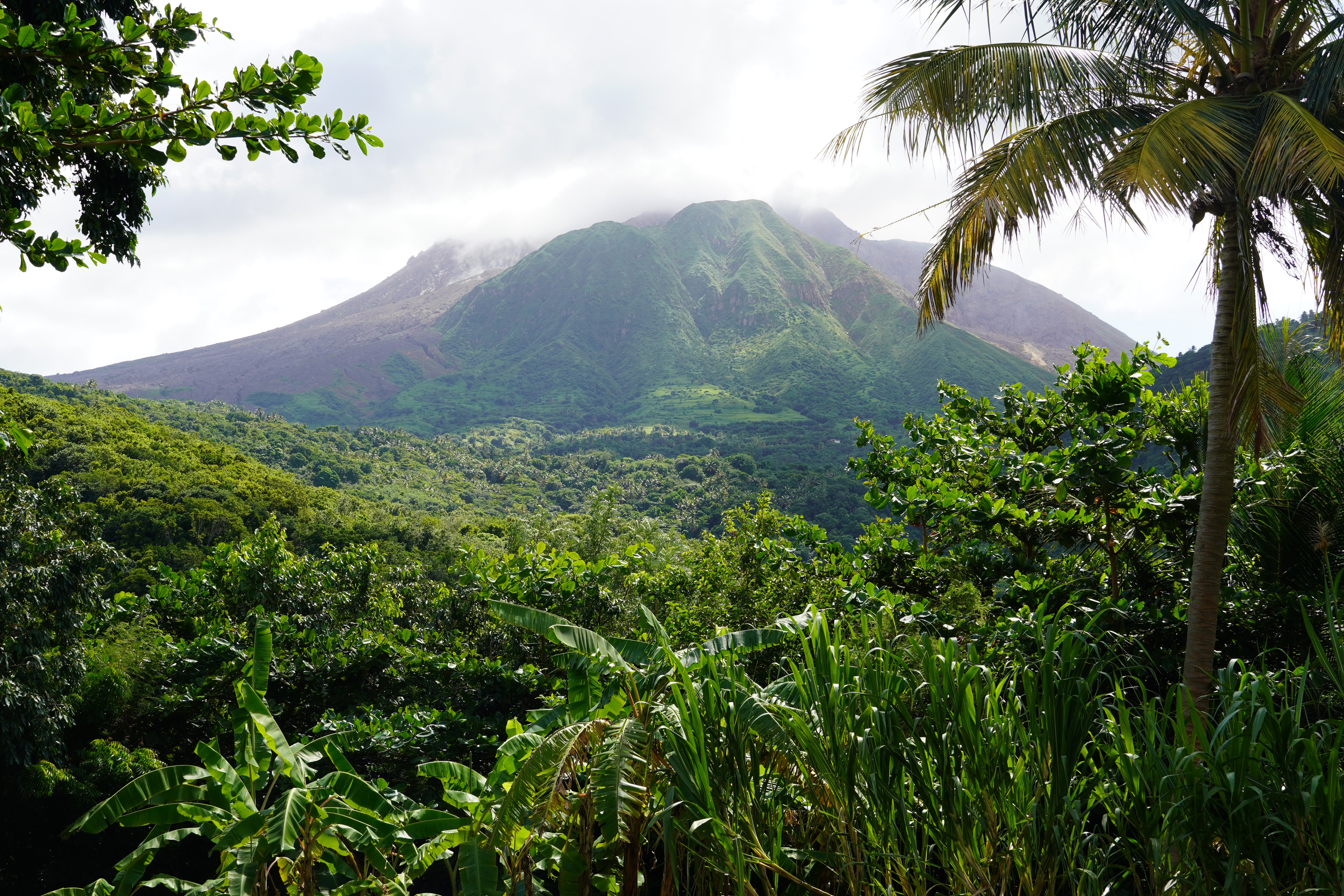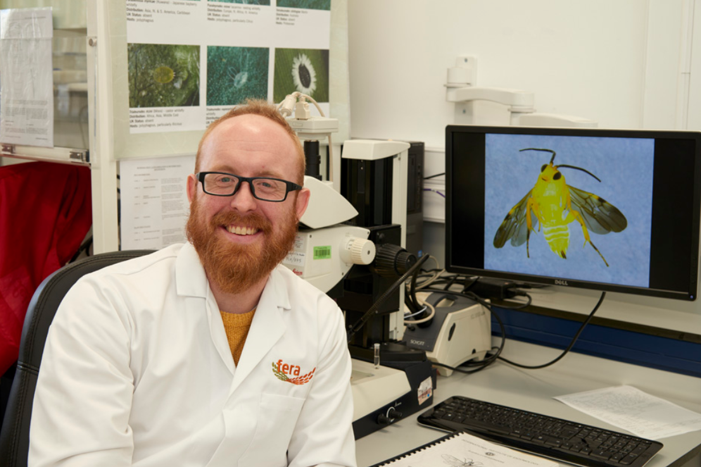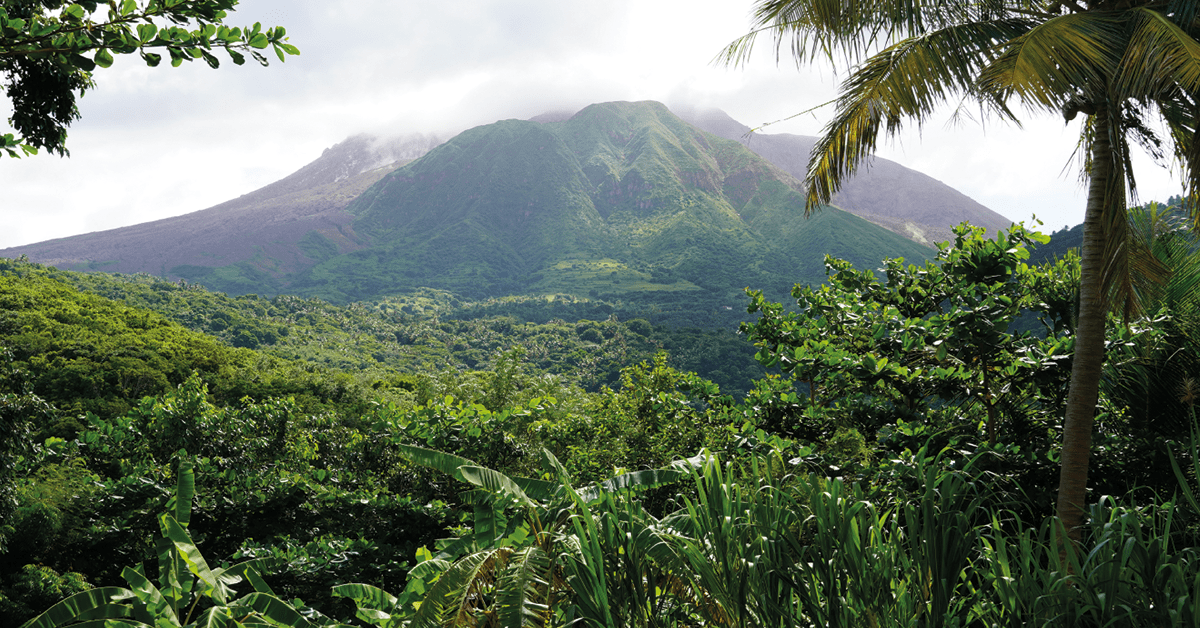Invasive alien species are a major cause of biodiversity loss globally and their impacts are often most severe on island ecosystems, including many of the UK Overseas Territories (UKOTs).
For 12 years, Fera Science has been providing an identification service for invasive invertebrate plant pests, biosecurity advice and training for the UKOTs. One example was a workshop to help strengthen biosecurity and protect agriculture and natural environments in Montserrat held in November 2019.
The project was organised by Chris Malumphy (Fera), Jill Key (GB Non-Native Species Secretariat), and the Government of Montserrat with financial support from the UK Government Conflict, Stability and Security Fund. An article providing more details of the results of the workshop can be found here.

Lush, verdant vegetation in Montserrat
Field work
An essential part of the workshop was field work to see the pests in life, and more than 150 invertebrate species were recorded. One of these was a striking wasp with a bright yellow body, black eyes, and smoky wings, collected by Elvis Gerard, an extension worker in Montserrat. Samples were returned to Fera for identification, where Entomologist Rob Deady (Fera) identified the wasp to genus and recognised it as something new. He sent the wasp to Ilgoo Kang at the Louisiana State University Agricultural Center, who was studying this group.

Rob Deady recognised the wasp as new to science
Ilgoo described the new species as Schoenlandella montserratensis, named after the island where it was discovered. The full description can be found here.


A potentially beneficial wasp
The new wasp is a parasitoid and adult females lay their eggs on caterpillar hosts. The eggs hatch and the wasp larva develop inside the living caterpillar body, before killing it. Many species of parasitoid wasp have been used for the biocontrol of agricultural pests, helping to manage the pest and reducing the use of pesticides. The new wasp was found in association with melonworm moth caterpillars feeding on a bitter gourd crop. The new wasp, following further research, has the potential to be used to manage this important agricultural pest.

Melonworm moth caterpillar – a major pest in the Caribbean
To learn more about the research and biosecurity support that Fera Science continues to provide for the UK Overseas Territories, you can visit the GB Non-native Species Secretariat (NNSS) website here. Or to find out more about the full breadth of our Crop Health diagnostics capability, you can click here to find out more.
Or alternatively, click here to visit our insect identification service.




